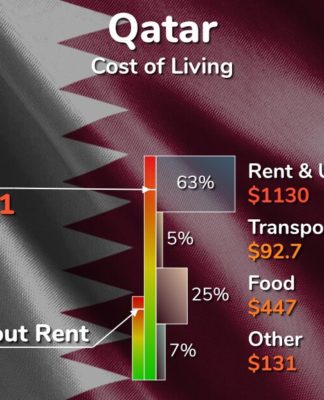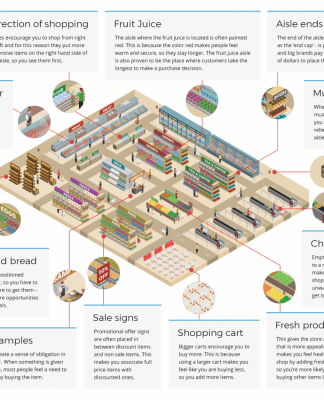Coronavirus pandemic: How institutions and private sector mitigate the impact?
By Saad al-Kuwari
· What is the financial impact of the Coronavirus pandemic and how, companies, institutions and private sector are mitigating the impacts?
The Coronavirus pandemic that struck the world resulted in a sharp decline in the performance of most economic activities. In this article, I highlight the effects of this pandemic on the financial performance of institutions, while explaining the corrective measures to reduce the effects of this pandemic.
The impact of the Coronavirus pandemic on corporate finances:
The pandemic has negatively affected corporate finance activities including working capital, profitability, liquidity, and financing. However, this impact was uneven according to the nature of the activity of each institution, as the activities most negatively affected by this pandemic are construction, hotels, restaurants, transportation, wholesalers, retailers and entertainment, followed by manufacturing and real estate activities.
While the sectors least affected are health, social work activities, and communication and information services.
At the global level, it has not changed from the situation in the United Kingdom.
According to a survey conducted by ACCA, a leading UK accounting body, of 10,000 members from 100 countries, this survey showed that (of the 40% of the sample surveyed) they had encountered great difficulties in cash flow for their projects, and 80% of the respondents expected revenues and profits to drop significantly for this year than expected.
The same source also revealed that 60% of the respondents indicated a significant decrease in the productivity of employees due to reasons related to safety, health and job instability.
Now a closer look at the financial indicators affected by the Coronavirus pandemic:
The pandemic affected the reduction of working capital for most companies due to the weak demand for products and the repercussions of government decisions to close down most economic activities and markets.
Accordingly, the working capital of the institutions decreased, including inventory balances, debtors, cash and creditors. This is due to a lack of liquidity for customers, a decrease and stoppage of production, a failure in supplies of raw materials and spare parts, and a sharp decline in sales.
This also contributed to weakening liquidity, deterioration in productive capacity and profits, and weak institutional capacities.
On the other hand, the profitability of institutions has also been negatively affected due to the sharp decline in revenues due to the decline in demand. As a result, companies have slowed down or stopped their operations, ended the services of some of their employees, reduced employee costs, and current and capital expenditures were generally subject to control and rationalisation, and the institutions’ departments negotiated with creditors to schedule debt repayment.
According to a survey conducted by the European Central Bank (ECB) last May, some 15% of European SMEs reported a sharp deterioration in profits. In addition, company managers took immediate measures to stimulate sales, control expenses, improve operational efficiency and benefit from government support programs, hoping to revive profits.
Moreover, the Coronavirus pandemic affected the liquidity of the institution, which resulted mainly from the cracking of working capital and profitability in addition to the difficulty in obtaining financial facilities from banks and investors. According to the European Central Bank survey of small and medium enterprises in Europe, some 18% of SMEs in the Eurozone consider their financial situation resulting from the Coronavirus pandemic a factor that hinders their access to external financing.
This lack of liquidity will also affect the ability of institutions to repay debts and meet the payment of bills for expenses, purchases and growth, and will inevitably lead to the postponement of any capital or investment spending until after the end of the pandemic.
Due to the difficulty of obtaining external financing due to the weak financial performance of the institutions and the limited credit facilities, it has prompted companies to rationalise expenditures and benefit from the available and guaranteed loans from the government.
For example, the UK government is providing financial support due to the Coronavirus pandemic and is providing start-up loans of up to £25,000 with a fixed interest rate of 6% per annum as well as loans of up to £5mn for small and medium businesses payable for a maximum of six years.
Expectations also indicate that the exacerbation of corporate debts resulting from poor financial performance and the pessimistic economic outlook for the future will lead to many institutions defaulting in paying their debts, which may push these companies to face the risks of restructuring, creditors’ takeover, or even bankruptcy.
The European Central Bank survey on small and medium enterprises in euro, showed that nearly 30% of European small and medium enterprises (that have participated in the survey) had strong negative expectations about the impact of a pandemic on liquidity.
It is worth noting that creditors usually support the restructuring and acquisition of the bankruptcy alternative because the latter option will take longer and may not lead to full debt compensation.
Also, many creditors or banks still believe that this epidemic will disappear in the short term and companies will return to normal.
Finally, the financial evaluation of institutions is also negatively affected by this pandemic due to the decline in financial performance and negative expectations regarding the outlook for the economy and markets.
Important measures to curb weak financial performance of institutions:
In light of the critical circumstances of the Coronavirus pandemic and the pessimistic outlook, companies have taken some necessary measures to reduce current and capital expenditures and improve financial performance including reviving working capital, liquidity and profitability.
To improve working capital, companies need to plan and monitor daily progress in working capital accounts. To manage debtors, it is required of the project owner communicate with customers to understand their pain, demand expectations, and provide assistance, in addition to following up the collection according to the credit granted and offering cash discounts for immediate collection.
To manage inventory, one must first plan inventory and give priority to materials involved in the manufacture of short-term sales orders, as well as daily review the demand in the market and update procurement plans accordingly, as well as maintain effective communication with suppliers to avoid any delay in supply or price hikes.
One can also run promotions to eliminate slow-moving inventory and increase sales. One can improve the creditors’ account by communicating with suppliers, taking advantage of the granted credit period, and avoiding any unnecessary supplies or purchases.
To increase cash flow, one should plan weekly cash flows and daily follow-up of cash accounts, in addition to stimulating sales, controlling expenditures and improving profitability, besides increasing the efficiency of working capital management and benefiting from government-backed credit facilities.
Improving profitability also requires hard work, including reviving demand or revenue, by communicating with customers and meeting their urgent needs, modifying the business model to support the market, in addition to continuing to reduce costs.
Finally, the topic of cost reduction in this critical circumstance is important to enhance profitability and its growth and includes measures such as reducing staff costs, negotiating to obtain the best offers for raw materials and services, encouraging remote work, and restricting distribution and administration expenses.
Ends


























